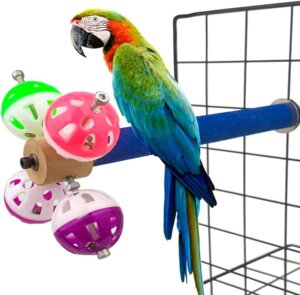Is My Budgie Male Or Female? Discover Their Gender With Ease!
To determine the gender of your budgie, observe its cere. In males, the cere will be dark blue, while in females it will be pink or brown.
Physical Characteristics
When it comes to determining the gender of your budgie, there are several physical characteristics that can provide clues. One of the key indicators is the color of the cere, which is the area just above the beak. Additionally, there are other physical features that can help in identifying the sex of your feathered friend. Let’s explore these indicators in more detail:
Cere Color And Its Significance
The cere color of a budgie can be a strong determinant of its gender. The cere is the fleshy area located above the beak, and its color can vary depending on whether the budgie is male or female. In males, the cere starts off as a pale pink color when they are young and gradually turns blue as they mature. On the other hand, female budgies generally have a cere color that is either light blue, white, or brownish when young, but it darkens and becomes a deep brown as they reach maturity. The change in cere color is a result of hormonal activity in the budgie’s body.
Other Physical Indicators Of Budgie Gender
Aside from the color of the cere, there are additional physical indicators that can help determine whether your budgie is male or female. Here are some other characteristics to look out for:
- Head shape: Male budgies typically have a round, slightly larger head compared to females, who have a more streamlined head shape.
- Body size: Males tend to be slightly larger in size, both in body length and overall weight, compared to females.
- Behavior: Male budgies often display more dominant behavior, such as head-bobbing or beak tapping, whereas females generally exhibit a more docile and quieter demeanor.
- Vocalization: While both male and female budgies can chirp, males are usually more vocal and may produce a wider range of sounds compared to females.
Behavioral Differences
In order to determine the gender of your budgie, it’s important to observe their behavior. Male and female budgies exhibit certain behavioral differences that can help you identify their gender.
Differences In Chirping Behavior
All budgies chirp, whether male or female. However, males tend to be more social and produce more sound. They are often referred to as the “singers” of the budgie world. Males will chirp and sing to establish their territory and to attract a mate. On the other hand, some females can have a lot to “say,” in budgie-speak, once they feel totally comfortable and trusting in their environment.
Social Behavior And Sound Production
Male budgies are typically more social than females. They enjoy interacting with their human caregivers and other budgies. Males will often show off their feathers, sing, and engage in playful behaviors to gain attention. They are more likely to mimic sounds and speech.
While females can also be social, they may exhibit slightly different behaviors. They may be more reserved and less inclined to seek attention. However, once they form a bond with their human caregivers or other budgies, they can be just as affectionate and interactive as males.
In terms of sound production, males tend to have a wider range of vocalizations and can imitate various sounds more easily. Females, on the other hand, may produce more subtle chirps and softer sounds.
Frequently Asked Questions For Is My Budgie Male Or Female?
How Can I Tell If My Budgie Is Male Or Female?
To determine if your budgie is male or female, observe the color of the cere (area above the beak). Males have a dark blue cere, while females have a pink or brown cere. For young budgies, the cere starts pale pink for males and turns blue at around one year old.
The color of the nose can also indicate gender, with females having a pink or brown nose and males having a blue nose.
Can A Female Budgie Have A Blue Cere?
Yes, a female budgie can have a blue cere. While dark blue is typically associated with males, light blue can be seen in females.
How Can You Tell A Male Bird From A Female?
To determine the gender of a bird, look at the cere, the area above the beak. Males typically have a dark blue cere, while females have a pink or brown cere. The color may change as the bird ages, so it’s best to observe the cere over time.
Do Female Budgies Chirp?
Yes, female budgies do chirp. Males tend to be more social and produce more sound, but some females can also be vocal once they feel comfortable in their environment.
Conclusion
Determining the gender of your budgie can be a challenging task. However, by observing the color and texture of the cere, as well as considering behavioral differences between males and females, you can make an informed guess. Remember, each budgie is unique, and it’s always a good idea to consult with a veterinarian for a definitive answer.
Take the time to understand and appreciate your budgie’s individuality, regardless of its gender.
Hello Dear, I'm Poli Kolymnia, owner of many birds (including budgies).
With a deep passion for these feathered companions, I'm here to share my expertise and extensive knowledge on birds care.
My articles cover essential topics like diet, housing, care, and health, providing practical tips to help you create a happy and thriving environment for your birds.






